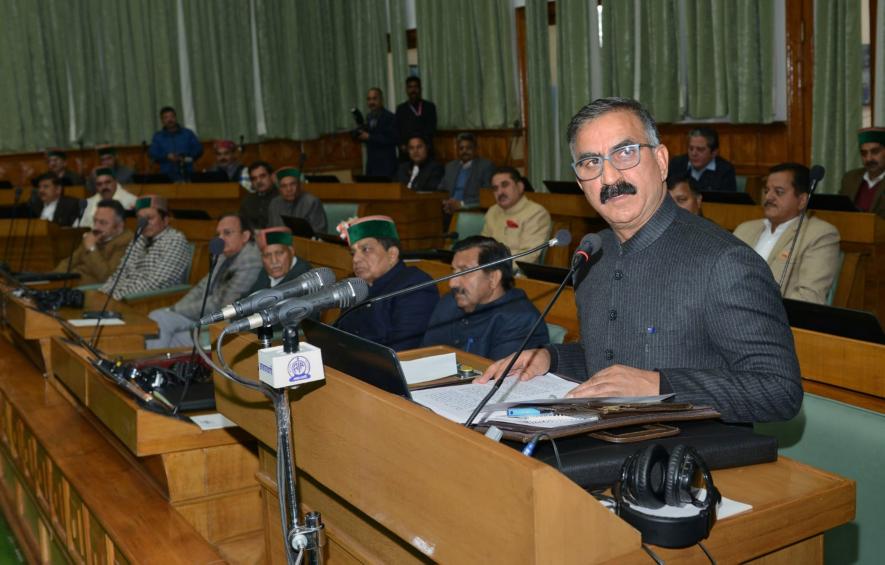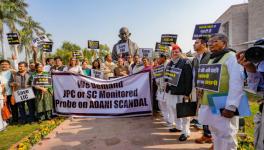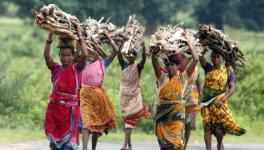Himachal Budget 2023-24: Can it Bring the Desired Changes?

Himachal Pradesh Chief Minister Sukhvinder Singh Sukhu presents the State Budget 2023-24 in the Assembly, in Shimla, Friday, March 17, 2023. Image Courtesy: PTI
The state of Himachal Pradesh got full statehood in 1971; it followed a development path that was "left of centre" until the 1990s.
After the introduction of neo-liberal reforms and the signing of the FRBM (Fiscal Responsibility and Budget Management) Act, tremendous challenges have hit the state's capacity to perform even if some governments wanted to. The state is next to Kerala in the human development index.
The state has been able to prepare and increase the size of the cake since it was formed. However, the size of the cake has shrunk since the 1990s, and at the most, the elected governments could cut and distribute the cake in a "relatively egalitarian manner."
Though the distribution of this cake was also contested, some privileged sections of society grasped a larger pie.
Now the necessity is to increase the size of the cake to ensure that people's lives are made better. Does the current budget placed by the chief minister himself address this issue? The answer will lie in the details that follow in this write-up.
The budget must be read with the Economic Survey 2023, placed in the Vidhan Sabha a day before the budget.
SOME OF THE FEATURES
The growth in the economy is expected to fall from 7.6% to almost 6.4%.
The total state GDP is around Rs 1,95,404 crore. The contribution of primary, secondary, and tertiary sectors contribute to the state's GDP by 13.7%, 42.73%, and 43.57%, respectively. The inherent contradiction in the state gets manifested in this figure.
Whereas the contribution of the primary sector, which includes agriculture, mining etc., is 13.7%, around 57.03 % of people depend on this important sector for their livelihoods.
Hence even when the per capita income (PCI) is higher than the national average, it still shows the importance of redistributive policies and politics in the given context. The PCI is Rs 2,01,271, whereas the India average is Rs 1,27,065.
So, democratically cutting the cake is an important task, along with how to increase its size.
The current figures show that the total expenditure in the budgetary plan is Rs 52,365 crore, of which Rs 40,279 crore is the revenue budget. Just 10.59% is for capital expenditure. With such meagre investments, there is little scope to increase the cake size unless the state hits a gold mine or something similar.
The debt as a percentage of GDP is expected to rise from 35.25% to almost 40%. The state must also look into why there is a projected fall in revenue receipts from Rs 37,000 crore to Rs 36,000 crore in the budget. This is a fall of nearly 2.51%.
There must be a severe introspection into the persistent fall in revenue receipts. It has fallen from 20.86% of GDP in 2018-19 to 18.62% in 2022-23.
In straightforward terms, even if the government intends to spend more on people's programmes, there is a shrunk capacity. How will the government increase this?
Likewise, there is a fall in the total expenditure from 2018-19 to 2022-23 from 26.39% of GDP to 26.27% of GDP.
If the government is spending less as a percentage of GDP and adding modest inflation of 6%, it is spending less than 7-8% than it was able to do a few years back.
NEW APPROACH
Listening to the chief minister's speech (also the finance minister), was like music to the ears. After a gap of many decades, there was mention of the terms alien to the bogey of financial consultants who have been guiding and building the state financial architecture. In short, the structure for reducing the fiscal deficit, more privatisation, outsourcing, and shrinking the government/public structure.
But, unlike these formulations, there was a difference in his speech. After many decades, the budget speech spoke about a systemic change.
"Dr Yashwant Singh Parmar, the first Chief Minister of Himachal Pradesh, put the state on the path of inclusive development. We must follow a new strategy considering the present scenario and future challenges. Our government has not come to the office just for assuming power but has a strong belief in bringing systemic changes for the welfare of the masses," Himachal Pradesh CM Sukhvinder Singh Sukhu said.
This is a significant disruption from the past and needs to be adequately understood.
Unlike the previous governments, the incumbent government announced a switch to the old pension system, a promise which led Congress to victory in the elections. But will the incumbent government be able to achieve what it says: "systemic changes."
This is for the future to tell.
A departure from the current model of development in the state must accompany any systemic change. And for that, there has to be a potent stimulus in the developmental growth trajectory compounded with strong democratic distributive policies.
WHAT IS THE BUDGET OFFERING?
There is an emphasis on green corridors for electric buses. There is a subsidy for electric buses, and the old diesel buses will be replaced. This is a good decision. But there must be a vision visualising the mobility of people and goods in the state. Even if there is a reduction of 100 carbon points in this process, but simultaneously more than 500 carbon points are added via new purchases, the net result is negative. There should be a comprehensive mobility plan for at least some of the major towns and cities in the state.
Another critical area of targeted development is tourism. Kangra is supposed to be made the tourism capital of Himachal Pradesh. The desired outcome of the proposal, as mentioned in the budget, explains the imprint of the multilateral institutions in it. Golf Course, etc., does not lead to sustainable tourism. For sure, Kangra has excellent potential in extracting tourism surplus. Still, efforts should be undertaken to ensure sustainable tourism and avoid having a 'Joshimath' form of tourism where we lose more than gain.
The best proposal in the budget is "HimGanga", where Rs 500 crore will be spent on sustaining animal husbandry in the countryside. This is a welcome move.
WHAT MORE WAS DESIRED
The budget focuses on robotic surgery, and the emphasis is on curative health. This needs to be wholly inversed. Not that curative health is not required. But the emphasis must be on preventive care; this will save people from bad health, and the state will save phenomenal money for the government.
The budget also rightly speaks about artificial intelligence (AI). It is estimated that in South Asia, nearly 75% of the workers will lose their conventional form of employment due to AI. Whereas capacity building in this direction is good, there should have been a direction to lay a central fibre network across the state, ensuring better bandwidth and network.
The outsource workers in government departments are getting a paltry Rs 8,000-10,000. These should have been enhanced to at least Rs 25,000/month, akin to a hike in the honorarium of elected third-tier representatives.
The state is amid the massive solid waste. A day's journey from one town to another explains the complete failure of municipal and government agencies to manage waste. The budget should have mentioned this area and the support the cities will get from the state to mitigate this crisis.
The chief minister has at least made a beginning with proverbial phrases which were not being heard in the past. Now the time is ensuing them on the ground for a better and a liveable Himachal.
The writer is the former deputy mayor of Shimla, Himachal Pradesh. The views are personal.
Get the latest reports & analysis with people's perspective on Protests, movements & deep analytical videos, discussions of the current affairs in your Telegram app. Subscribe to NewsClick's Telegram channel & get Real-Time updates on stories, as they get published on our website.
























